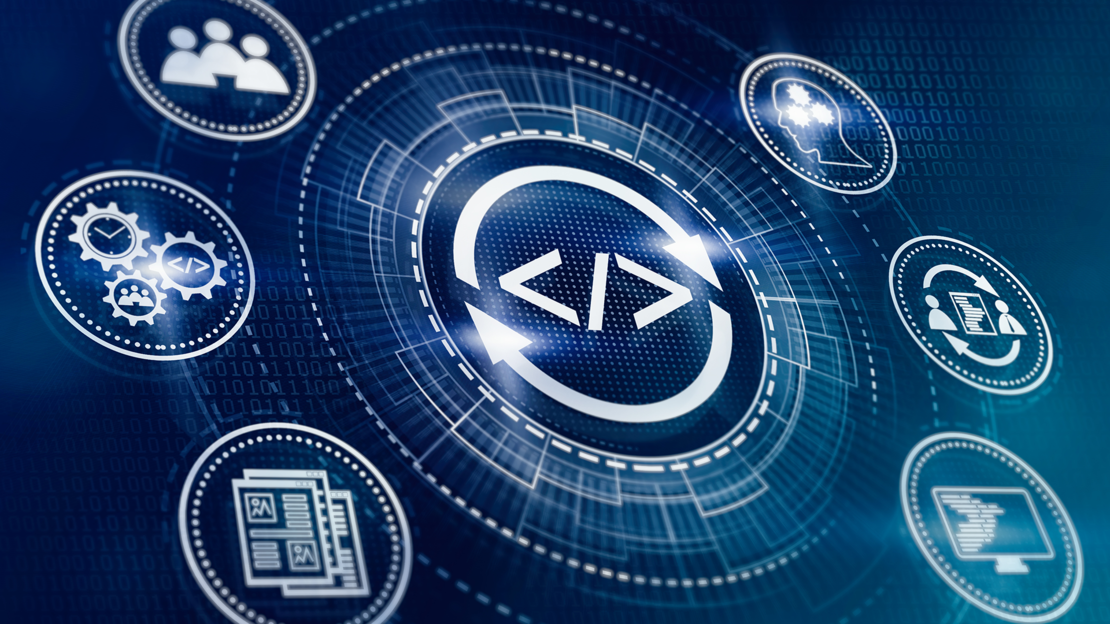DevOps goals
Every company wants its IT to be able to place new, high-quality solutions and functionality on the market at speed. To do that, they must always be able to write and deploy code for the application, ensure short lead times, maintain stability and quality at the highest level, minimise errors and defects through automation and testing, and get systems back up and running again quickly following any downtime.

DevOps dimensions
Reaching DevOps goals requires an interplay between theory and practice from many areas and disciplines. To shorten release cycles and improve software quality, your teams will need to specify criteria and benchmarks to measure continual improvement. And you can accelerate and stabilise processes by increasing automation and applying it more radically. For DevOps to grow from a solid foundation, staff will need to switch their perspective to take a big-picture view of the whole process and the overall scope of the solutions. By introducing a culture and way of working that involves processing feedback on the solution from the operations team and users, DevOps can take software engineering to a new level of quality.

DevOps implementation
A DevOps implementation can be triggered from various quarters. It may be prompted for technology reasons, if an increasing number of components and the complexity of a growing infrastructure can only be managed with advanced automation. Or an initiative that begins by focusing on processes and organisation may trigger the expansion of DevOps to encourage a new working culture that promotes measurable added value by broadening and sharing knowledge.

CI/CD
Continuous integration and continuous delivery are at the heart of automation in the software engineering process. CI/C is the most important technical pillar for stabilising and improving every software development process. Every time source code is pushed into the version control system, software must be built and tests performed with test data that is transparent and secure. The resulting artefact must be stored in a repository and then rolled out automatically to the first environments. Only with these and other automatic functions can you guarantee that the code for a solution is operable, the infrastructure stable, and the overall solution is of a certified and sustainable quality.
Faced with digitalisation, the cloud, IT modernisation or a cultural transformation in IT, many organisations are currently asking themselves what they should do first. In our article, we discuss DevOps First or Container First – Strategies for a Successful Introduction: